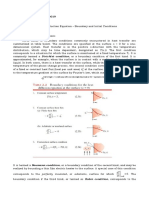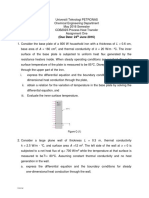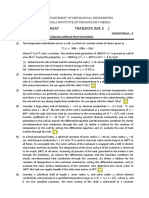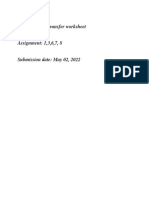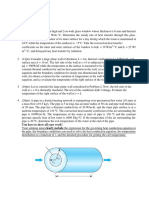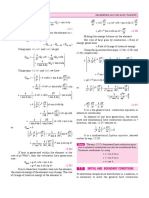0% found this document useful (0 votes)
27 views2 pagesHMT Assignment 2
The document outlines an assignment consisting of four questions related to heat conduction in cylindrical and planar geometries. It includes derivations of the heat conduction equation, analysis of heat transfer characteristics, and calculations involving specific thermal properties of materials. Each question requires the application of principles of thermal conductivity, steady-state conditions, and boundary value problems in heat transfer scenarios.
Uploaded by
Hamza AwanCopyright
© © All Rights Reserved
We take content rights seriously. If you suspect this is your content, claim it here.
Available Formats
Download as DOCX, PDF, TXT or read online on Scribd
0% found this document useful (0 votes)
27 views2 pagesHMT Assignment 2
The document outlines an assignment consisting of four questions related to heat conduction in cylindrical and planar geometries. It includes derivations of the heat conduction equation, analysis of heat transfer characteristics, and calculations involving specific thermal properties of materials. Each question requires the application of principles of thermal conductivity, steady-state conditions, and boundary value problems in heat transfer scenarios.
Uploaded by
Hamza AwanCopyright
© © All Rights Reserved
We take content rights seriously. If you suspect this is your content, claim it here.
Available Formats
Download as DOCX, PDF, TXT or read online on Scribd
/ 2














